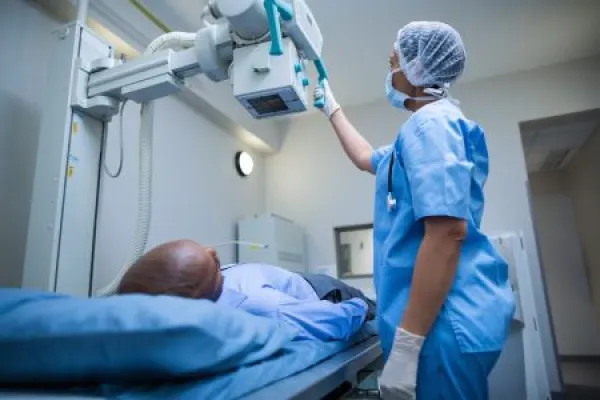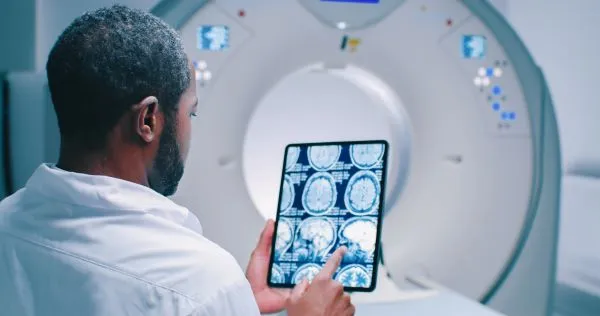Recognize When to Modify Radiology Codes With 26 and TC
Do you need 26/TC for professional- or technical-only codes? Radiologists often perform imaging services and interpret the exam’s results, but sometimes they’re asked to just capture or review the images. In those cases, you’ll need to know how to report the radiologist’s work by appending modifiers to the CPT® codes. Check out this refresher on how and when to apply modifiers 26 (Professional component) or TC (Technical component …) to your radiology procedure codes. Separate Professional Components From Technical Components Radiology coders must know when and where to divide radiology imaging tests and interpretation into professional and technical components (PC/TC). Several radiology procedures are reimbursed through the 2024 Medicare Physician Fee Schedule (MPFS) “global” service, which includes both the PC and TC. The global service should be billed by the provider who owns the radiology equipment, performs the service, and interprets the results. For example, 71047 (Radiologic examination, chest; 3 views) is a three-view X-ray global code that includes both professional and technical components. However, it is very common for a radiologist to perform only one part of the service, and in those cases, you can append modifiers 26 or TC to tell the payer the provider didn’t perform the entire global service. Append TC: TC is a HCPCS Level II modifier, which covers the provision of all equipment, supplies, personnel, and costs related to performing the procedure. You’ll append TC to the applicable radiology code when the radiologist performs the imaging exam, but another healthcare provider interprets the results. Append 26: This is a CPT® modifier that describes a physician’s professional services that aid in determining a medical diagnosis when a separate entity performed the technical service. For instance, you’ll append modifier 26 to your applicable code when the provider interprets the images and prepares their written report. “There’s not much of an inherent difference when describing the TC and PC components from a radiological perspective,” states Lindsay Della Vella, COC, AAPC Approved Instructor, owner of Midnight Medical Coding in the Greater Philadelphia area. “In radiology, the TC component involves the furnishing of the service. The PC component, on the other hand, involves the interpretation of the results of the service through a formal report,” explains Della Vella. Tip: For Medicare payers, you can pinpoint codes with separate technical and professional components by consulting the MPFS search tool on the Centers for Medicare and Medicaid Services (CMS) website at www.cms.gov/medicare/physician-fee-schedule/search. Recognize Reimbursement Differences When you bill both the PC and TC of a particular code, you’ll seek reimbursement for the global fee that’s listed in the 2024 MPFS database. The database also lists what you’d collect for the individual PC and TC portions. For example, suppose you bill Medicare for a heart computed tomography (CT) without contrast with quantitative evaluation of coronary calcium. You can expect different payment amounts if you bill the global code 75571 (Computed tomography, heart, without contrast material, with quantitative evaluation of coronary calcium) on its own, or if you append modifiers 26 or TC. Below are the non-facility fees, not adjusted for geographic pay differences, for 75571 from the 2024 MPFS: You’ll notice that totaling the PC and TC amounts together adds up to the global fee amount. CMS recognizes the individual component with the greater fee amount is where most of the work is happening — which, with 75571, is the TC. Identify Which Codes Are Professional-Only or Technical-Only The CPT® code set also contains radiology codes that are specific to only the technical or professional components. You should be aware of these codes, so you can report them correctly on your claim. Professional-only codes: Professional-only services are codes that contain “interpretation and report” in the descriptor. The services might be performed by another physician at another office, such as the patient’s primary care physician interpreting X-rays captured at an outpatient radiology practice. Examples of professional-only codes include: Technical-only codes: Services referred to as technical-only codes cover just the equipment setup, use, and capturing of the images needed for another healthcare professional to evaluate the body structure. An example of a technical-only codes includes: Professional-only and technical-only codes do not need modifier 26 nor modifier TC appended because the codes specifically cover those components, respectively. If you receive a radiology report that indicates professional-only or technical-only services were completed, double-check your codes and descriptors don’t require modifiers to ensure proper reporting.





